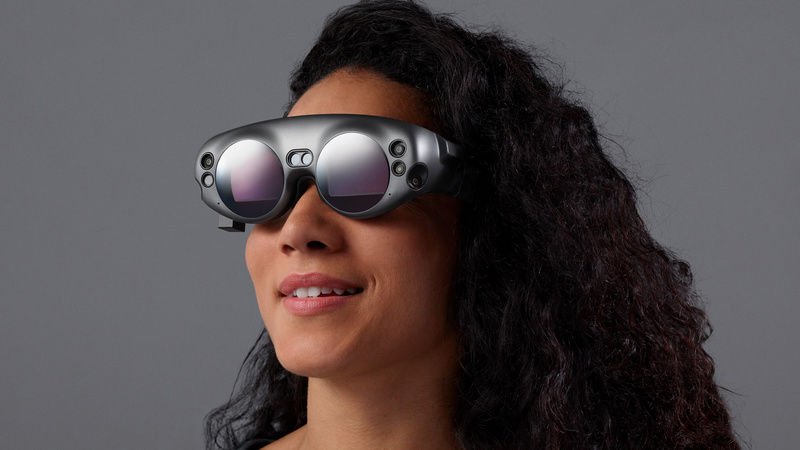
Is the outlook for technology in 2018 exciting – or slightly terrifying? Flip a coin, you’d be right either way.
As I look into my crystal ball at what new technologies are most likely to shape our lives in the next 12 months, I see science-fiction dreams coming to life: glasses that mix reality and imagination, an electric car in my driveway and gadgets that charge without plugs.
But coming out of a year where most Americans were hacked and Silicon Valley got scolded by Congress, there’s plenty to worry about. How many ways will artificial intelligence make decisions without us? And how long should we remain panicked about cybersecurity lapses?
Tech’s not just about shiny new gadgets anymore. So I put together this list of 10 technologies to look out for in 2018, for better and worse.
5 reasons to be excited
1) Tesla moves the car forward
Whether you’re an Elon Musk skeptic or true believer, it’s hard to deny the TeslaModel 3 has generated iPhone-level buzz about electric cars. Since this “affordable luxury” $35,000 (roughly Rs. 22.38 lakhs)-and-up sedan was unveiled in 2016, roughly 450,000 people have preordered one. Now if only Tesla could make them. Significant manufacturing issues keep pushing back the Model 3 delivery timeline, but there’s a good chance you’ll see some on the road in 2018. What’s the big deal? Tesla is forcing all car companies to act more like consumer tech companies, pushing into electric and making standard such capabilities as accident prevention and connectivity. My favorite Model 3 idea: it comes with the cameras, sensors and computing power it needs to eventually allow the car to drive itself.
2) The HomePod gets Apple talking
Hey Siri, glad you’re finally joining the house party. First introduced in summer 2017 and then delayed, the $350 (roughly Rs. 22,400) HomePod is Apple’s first talking speaker. For people who buy Apple everything, the HomePod has the potential to tie together music, the TV and the smart home in a way that the iPhone alone hasn’t. But there are huge doubts: Apple missed two holiday seasons that ushered competing Amazon Echo and Google Home products into many homes. Apple has mostly been touting the HomePod’s sound quality, but in my experience many people can’t actually tell the difference – or at least aren’t willing to pay extra for it.
3) Augmented reality is going places
Pokémon Go introduced the world to augmented reality, a fancy term for mixing the real world with digital information. In the year ahead, we’ll test whether that idea is more than a gimmick. Thanks to new AR-enabling tech in smartphones, the camera can be a search engine, interior design tool or teacher. We’ll also finally get our hands on an AR headset from Magic Leap, a much-hyped start-up that has raised $1.9 billion (roughly Rs. 1,21,000 crores) in funding. They call their forthcoming Magic Leap One gadget a “lightweight, wearable computer that enriches your experience in the real world with digital content” – though to me it looks like a prop from “Max Max: Fury Road.”
4) Wireless charging gets a much-needed jolt
Soon you might be able to leave the house without a rat’s nest of power cords. The tech to charge gadgets without plugs has been a non-starter for years because one very important brand was missing: Apple. But the iPhone maker just added wireless charging to the X and 8, putting its stamp of approval on a charging standard called Qi. Now coffee shops, furniture makers and car companies might be more confident about building wireless charging pads into everyday things. Let’s hope they do, because phone battery life isn’t improving nearly fast enough to keep up with how much we use them.
5) Digital subscriptions as the new norm
In 2018, paying for online video, music, games and (yes) news subscriptions will feel as normal as a $4 (Rs. 256) latte. Deloitte predicts that by the end of the year, 50 percent of adults in developed countries will have at least two online-only media subscriptions. Expect Apple to redouble its subscription video efforts, as well as big battles over streaming rights for sports. The shift to subscriptions is good for high-quality content creators who can’t make it with advertising alone, but consumers may start to feel the pain of too many $10 (Rs. 640) -per-month subscriptions. Here’s to hoping we see more bundle options, like a recent $5 (Rs. 320) a month combo deal of Hulu and Spotify for college students.
5 reasons to worry
1) Online political ads get more devious
Oh, you thought the 2016 election was bonkers? In the 2018 midterm elections, there will be even more tech to data-mine the lives of American voters. Instead of just demographics, ads could use “psychometrics” – gleaned from how we use social networks and other data – to target us based on our mindsets and personalities. It raises a host of thorny questions about how technology, particularly social networks, can be used to manipulate us and divide society. Online ads may also still be a lure for foreign meddlers, though Facebook and Google have promised more disclosure about who’s buying political ads.
2) The cyber-security menace keeps growing
Please maintain your near-constant state of alarm about hacking. In 2018, the risks are likely to only increase, and cybersleuths say possible targets include connected gadgets and US election systems. Businesses will be on the hunt for new ways to verify our identities in a world where Equifax data is out in the wild. And you’ll find a lot more apps and websites requiring extra steps to log in, such as “two-factor” systems that require a special code. My recommendation: Take an hour and change your password to something unique on every site with personal information. A password manager such as Dashlane or LastPass can help you keep track.
3) Dongles stick around
Dongle is the icky term for an adapter we need to connect things to phones and computers and proceed to lose at the bottom of bags. And it’s an icky part of gadget life that isn’t going away soon. Dongles were supposed to be a temporary bridge to the future for gadgets like the MacBook Pro, which removed the traditional wide USB port. But since 2016, the smaller USB “type C” plug Apple and others began using on laptops just hasn’t become common for accessories. (Even Apple’s own flagship iPhone X doesn’t come with a type-C cable.) This is a design flaw that afflicts an entire industry – and we’re the ones stuck with the dongle life.
4) Artificial intelligence judges you
Much of the conversation about AI to date has been hype. But in a million quiet ways, the tech is seeping into our lives – and for every happy use of AI, there seems to be a creepy one. It’s making decisions about what we watch and read. It can even be used to create authentic-looking fake content that has a scary name: “counterfeit reality.” How might AI be used to judge our voices, faces, emotions – or even whether we’re worth hiring? Companies are starting to discuss AI ethics, but keeping this tech accountable will be hard because we won’t always recognize its invisible hand.
5) Big tech keeps getting bigger
Silicon Valley got raked over the coals in 2017 about sexism, security and its influence on national affairs. But it hasn’t really grappled with the bigger problem: There’s too much power in the hands of too few. All five of America’s largest publicly traded companies are tech firms. Just the specter of Amazon’s expansion has prompted megamergers in recent months between Disney and Fox as well as CVS and Aetna. (Amazon chief executive Jeff Bezos also owns The Washington Post.) Nobody’s been able to significantly challenge Apple in smartphones. Google and Facebook dominate not just the media, but also our time and attention. Expect to see tech giants flogging their “social good” efforts in the year ahead, but our trust won’t be restored by watching them act like benevolent dictators.
[“Source-gadgets.ndtv”]










